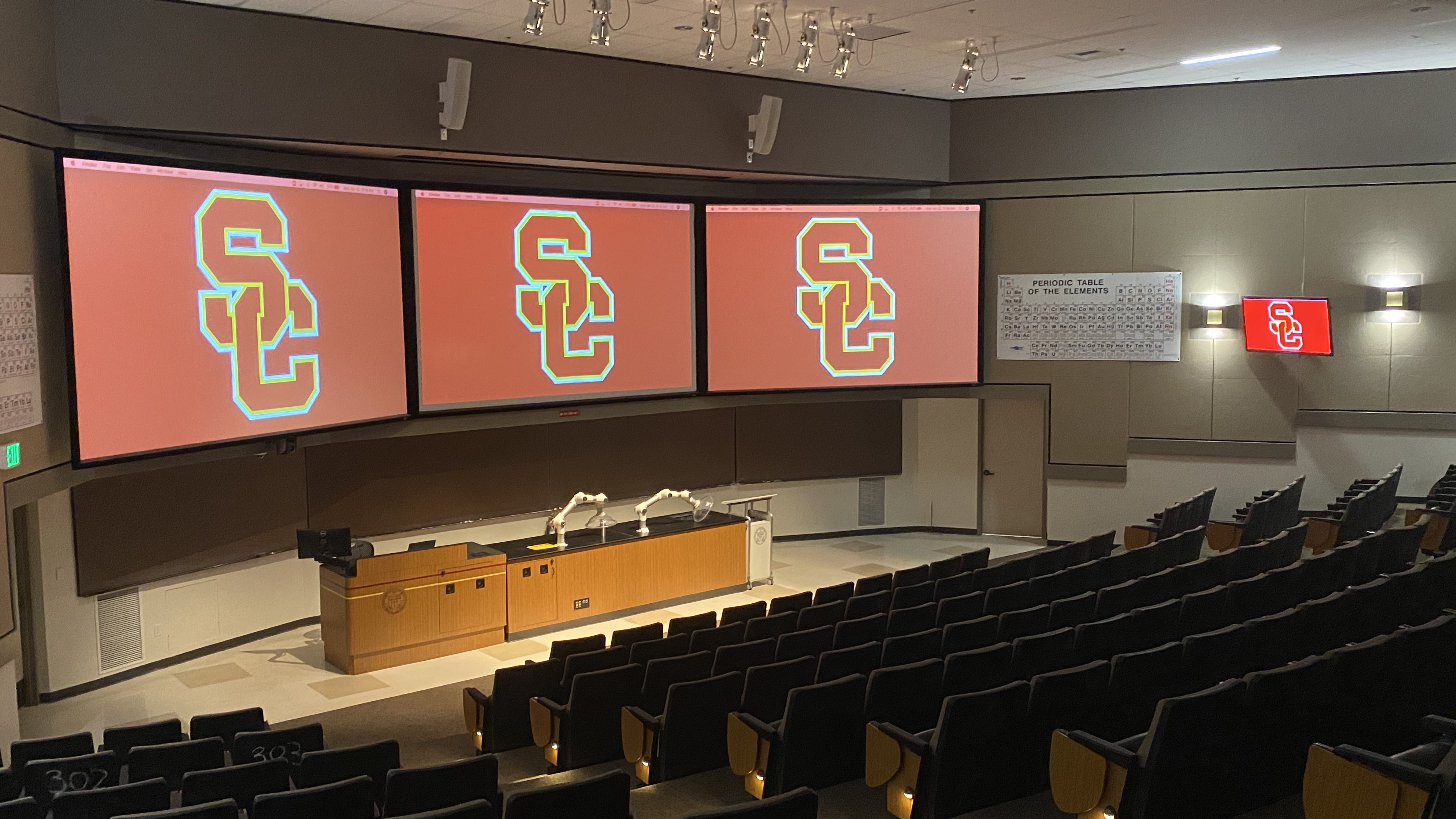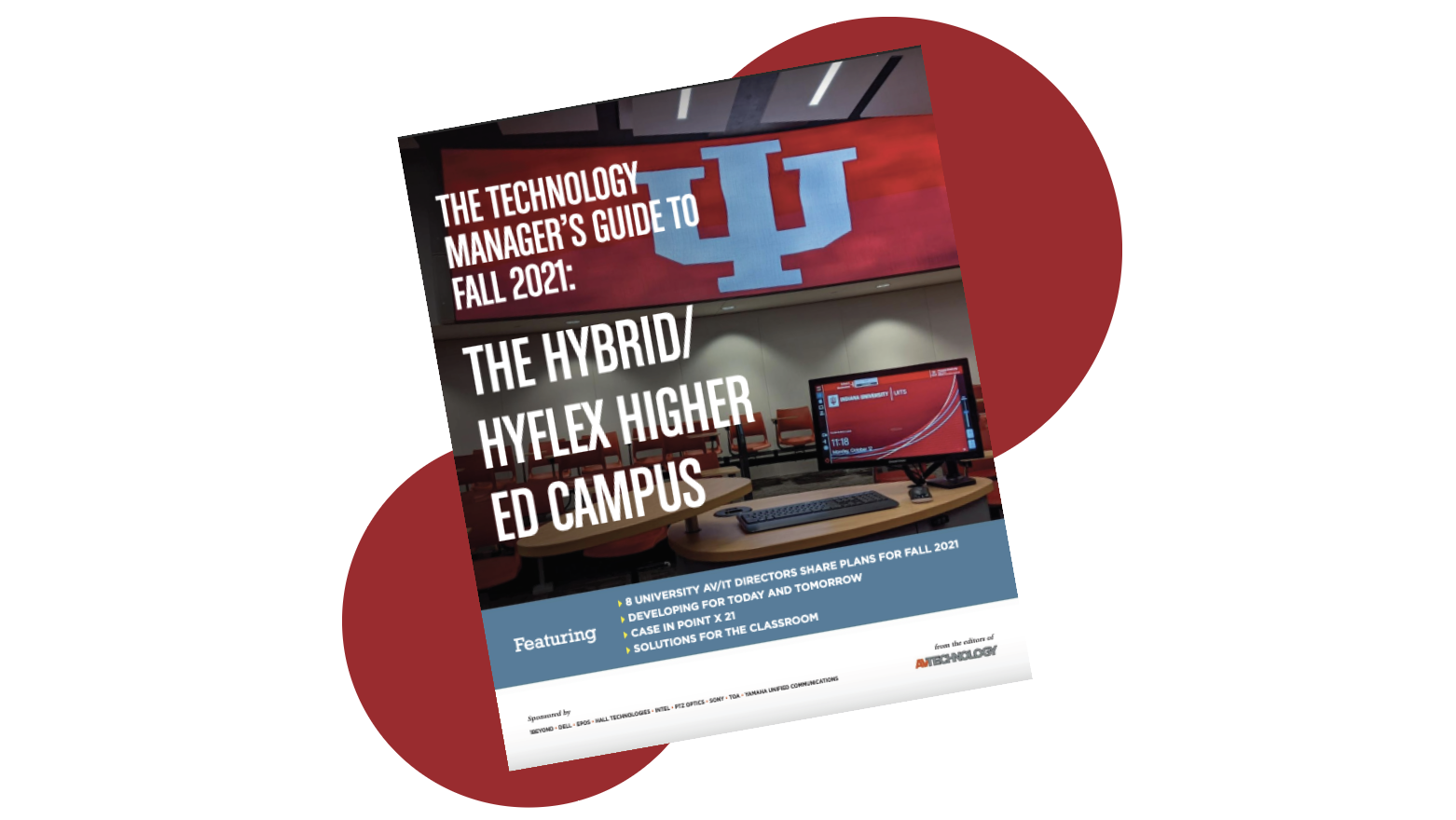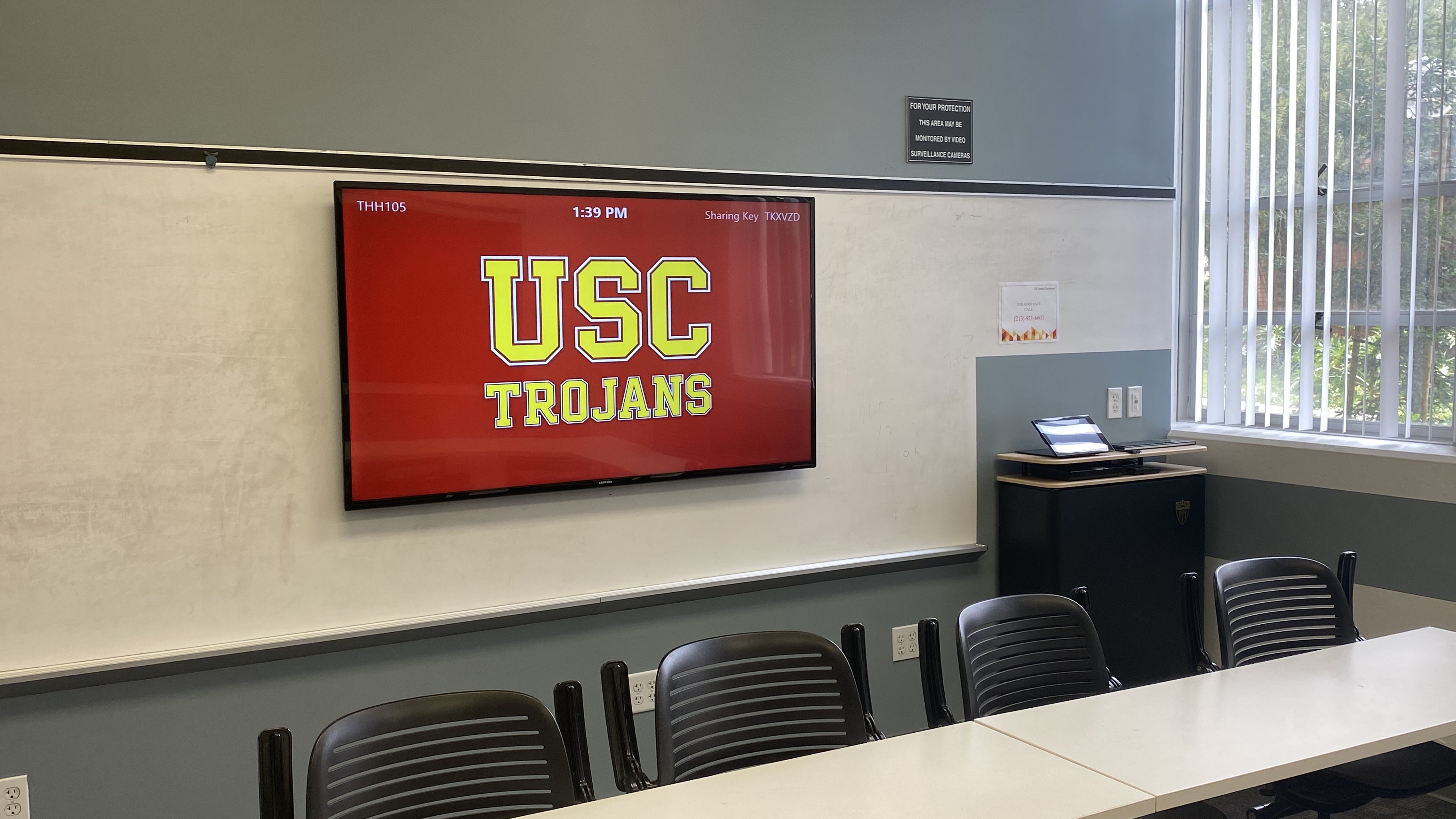Spotlight on the University of Southern California — 8 AV/IT Tech Directors Share: Fall 2021 – The Hybrid/HyFlex Higher Ed Campus
In preparation for the Fall 2021 semester, the University of Southern California completely upgraded all the AV in all its classrooms.

AV Technology content director Cindy Davis sat down with the AV/IT directors from eight universities to learn how they are approaching the 2021–22 school year. Some are returning to pre-pandemic status with few reconfigured classrooms for hybrid learning, others are all-in with hybrid, or HyFlex modalities, while others are in transition and planning for the future.
We’ve created a series of spotlights that provide an in-depth conversation with university AV/IT directors, which will be posted here on AVNetwork throughout September.
For a snapshot of all eight universities, plus industry thought leadership, and an extensive list of products for the hybrid and HyFlex classroom, download The Technology Manager's Guide to Fall 2021: The Hybrid/HyFlex Higher Ed Campus.
Spotlighting on the University of Southern California

Director, Learning Environments
Q: Pre-pandemic, what percentage of classes (if any) were set up as hybrid or HyFlex? What are plans for fall classes?
JW: Prior to the pandemic, we had a plan to upgrade most of our general use spaces (about 250 total) into hybrid learning classrooms. This plan was part of our Digital Transformation initiative, and was set to be done during the summer of 2020. We only had eight spaces capable of streaming prior to our plan, and even then they weren’t being used that way; they were really just used for recording.
Ninety-five percent of our courses will in-person in the fall; five percent will be offered online-only. Of the 95 percent in-person, about 15 to 20 percent of those will be hybrid. This means that about 75 percent of our courses will be back to pre-pandemic modalities. We were planning on having the classrooms socially distanced, masks required, and with touchless use, however, with California fully back open, we are back to normal. We are requiring students to be vaccinated and/or fill out a religious/medical exemption form.
Spotlight on 8 AV/IT Tech Directors
>> Spotlight on Boston University
A daily selection of features, industry news, and analysis for tech managers. Sign up below.
>> Spotlight on Brandeis University
>> Spotlight on The Brookings Institution
>> Spotlight on Indiana University
>> Spotlight on University of Massachusetts Lowell
>> Spotlight on the University of North Carolina – Wilmington
>> Spotlight on the University of Southern California
>> Spotlight on Western Kentucky University
Q: Have in-person classes resumed?
JW: In-person classes resumed for the summer 2021 semester, though summer enrollment is only 20 percent of regular fall/spring numbers. We are officially “fully open” and without restriction. For summer we have about 50 percent of the courses being taught hybrid, and in the fall we expect that about 25 percent will be hybrid or online. Prior to the pandemic we had zero online courses other than two MA programs.
Q: In what ways is your department gearing up for the fall different than if the pandemic not happened?
JW: We completely upgraded all the AV in all our classrooms. Therefore, the faculty will be returning to a whole new setup. This means a lot of training and a well-developed hyper-care program. Even if the classes don’t have online or hybrid components, there’s still a learning curve. How faculty adapt and react is a big unknown, and the unknown is the hardest to plan for. Our support teams must be prepared to be fast, fluid, and flexible.

Download The Technology Manager's Guide to Fall 2021: The Hybrid/HyFlex Higher Ed Campus
Q: Have more classrooms been outfitted with remote technologies specifically because of the pandemic?
JW: While our plan to upgrade all our general use classrooms was approved pre-pandemic, the scope grew from 250 to over 500 total spaces because of the pandemic.
Q: Key challenges?
JW: The most difficult challenge is ensuring equity in learning. We can control the technology on-site and we can even offer free loaner technology (like laptops and Wi-Fi hotspots) to students in need, but we can’t control the learning environment. On-campus we can offer accessibility options, proper ergonomics, and the right technical specs (lighting, viewing distance, et cetera), but we can’t control a student or professor’s home environment. Are there other distractions or inadequate spaces to learn or teach from—other people in the house? We know that not everyone has the same advantages when remote, and therefore it impacts the learning effectiveness.

Q: Do you have advice for your peers on training faculty to use new hybrid classroom technologies?
JW: Be present; they don’t know what they don’t know. Faculty are already worried about being effective in this new landscape. Partner with them and guide them. We can’t expect that what’s intuitive to us is intuitive to them. Faculty have more important things to worry about than technology, namely connecting with their students and getting the content delivered in a way that impacts desired learning outcomes in a positive way. We are planning for “all hands on deck” for the first 6 weeks of classes in the fall until the “training wheels” can come off. We don’t want faculty worried about the technology while they are having to figure out how to teach effectively in a hybrid modality.
Q: Parting Thoughts?
JW: This is an exciting time to be a tech manager in higher education. This is a true “pivot point” in teaching and learning. We must embrace it and be prepared to lead the way. Our faculty, students, and administration are looking to us as the experts to lead the ship. It’s going to be a bumpy ride, but a gratifying destination lies ahead.

Cindy Davis is the brand and content director of AV Technology (AVT). She was a critical member of the AVT editorial team when the title won the “Best Media Brand” laurel in the 2018 SIIA Jesse H. Neal Awards. Davis moderates several monthly AV/IT roundtables and enjoys facilitating and engaging in deeper conversations about the complex topics shaping the ever-evolving AV/IT industry. She explores the ethos of collaboration, hybrid workplaces, experiential spaces, and artificial intelligence to share with readers. Previously, she developed the TechDecisions brand of content sites for EH Publishing, named one of the “10 Great Business Media Websites” by B2B Media Business magazine. For more than 25 years, Davis has developed and delivered multiplatform content for AV/IT B2B and consumer electronics B2C publications, associations, and companies. A lifelong New Englander, Davis makes time for coastal hikes with her husband, Gary, and their Vizsla rescue, Dixie, sailing on one of Gloucester’s great schooners and sampling local IPAs. Connect with her on LinkedIn.
